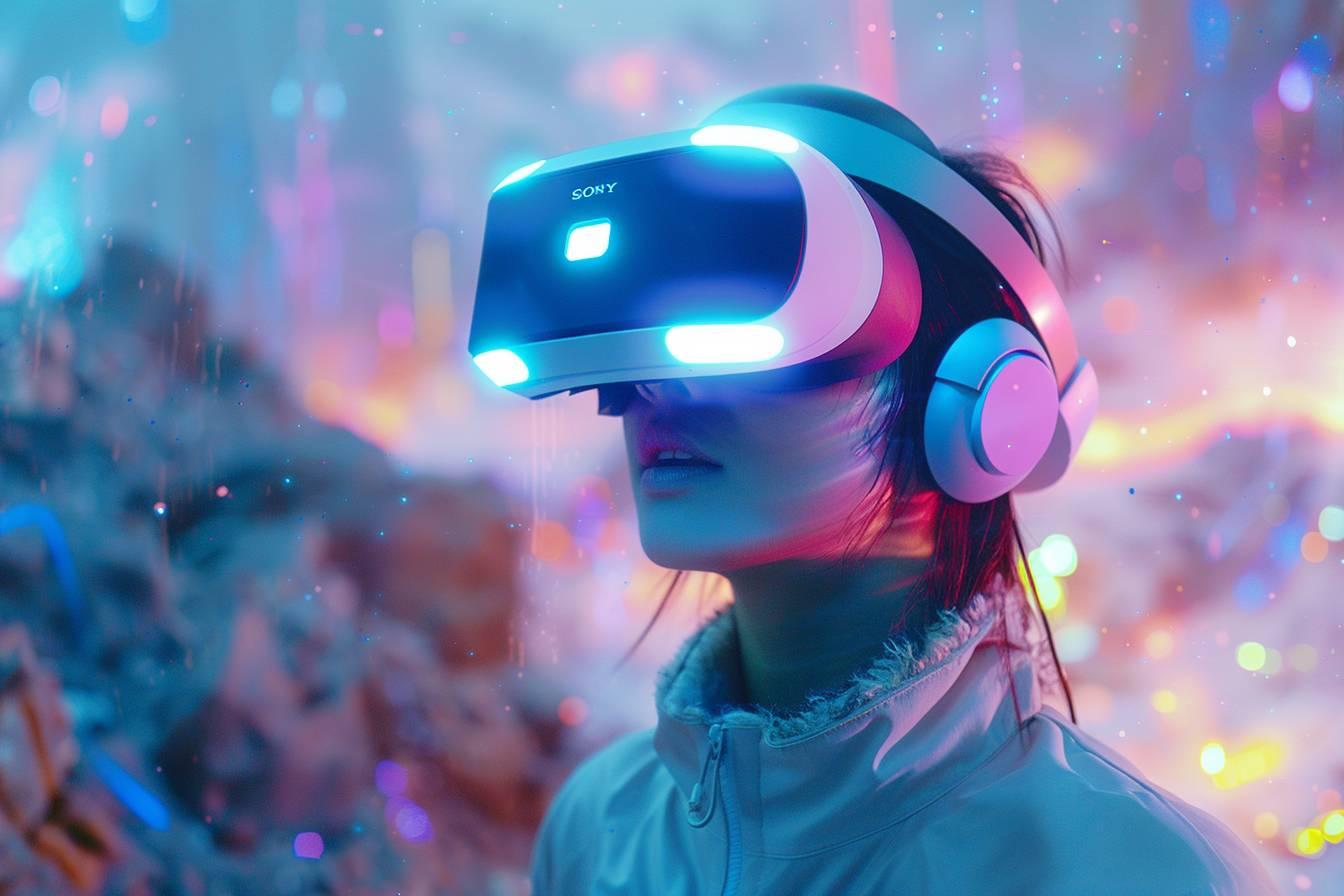The world of virtual reality is evolving at lightning speed, transforming the way we interact with the digital world. From technological innovations to revolutionary applications, the VR world is constantly pushing back the boundaries of immersion. Let’s delve into the latest advances shaping the future of this exciting technology.
New headsets: ever greater immersion
The year 2024 promises to be rich in new hardware for virtual reality aficionados. Industry giants are vying with each other in their ingenuity to offer ever more immersive and comfortable experiences.
Sony made its mark with the launch of PlayStation VR2 (PSVR2) in February 2023. This headset, designed exclusively for the PS5, promises exceptional image quality and enhanced interactivity. For its part, HTC is not to be outdone with its Vive Focus Vision, a top-of-the-range model priced at €1,200.
But the real revolution may well come from Varjo. The Finnish firm has unveiled the XR-4, a mixed-reality headset with 4K screens for each eye. This technical feat promises unprecedented immersion, further blurring the boundaries between real and virtual.
Here’s a comparative overview of today’s leading VR headsets:
| Model | Resolution per eye | Special feature |
|---|---|---|
| PlayStation VR2 | 2000 x 2040 | PS5 exclusive |
| HTC Vive Focus Vision | 2448 x 2448 | Standalone |
| Varjo XR-4 | 3840 x 2160 | Mixed reality |
Evolution doesn’t stop at hardware. Tech giants are working hard to improve theuser experience. Meta, for example, is developing AirPlay compatibility for its Quest headsets, while Apple is working on glasses-free 3D screen technology, opening the way to new forms of interaction.
Games and applications: a booming ecosystem
Virtual reality’s appeal is largely based on the richness of its content. Developers are redoubling their efforts to offer ever more varied and captivating experiences.
Among the most noteworthy new releases are :
- Blade & Sorcery: Nomad – A medieval-fantasy combat game
- Dumb Ways to Die – A VR adaptation of the popular mobile game
- Airspace Defender – An immersive space shooter
Existing games are not to be outdone. Kayak VR Mirage, for example, has added a multiplayer mode, enabling players to paddle together through breathtaking landscapes. These developments testify to the growing maturity of the VR ecosystem.
However, not all the news is positive. Users of Minecraft on PSVR have had to bid farewell to the game, Microsoft having decided to end support for this version. This decision is a reminder that the VR industry remains in constant flux, with its ups and downs.
As for applications,innovation is also on the agenda. Sony highlighted Pudica, an immersive musical experience designed specifically for its headset. This type of content, halfway between gaming and art, perfectly illustrates the creative potential offered by virtual reality.

Market trends: between openness and consolidation
The economic landscape of virtual reality is undergoing major transformations. The strategies of industry players reveal an industry in the throes of change, oscillating between collaboration and fierce competition.
Meta, formerly Facebook, has taken the bold step of opening up its Horizon OS operating system to third-party manufacturers. This strategy of openness could well redefine the contours of the market, enabling new players to offer headsets compatible with the Meta ecosystem.
On the other hand, Microsoft has chosen to withdraw from the consumer mixed reality segment, abandoning Windows Mixed Reality. This strategic repositioning reflects the difficulty of gaining a foothold in a market that is still young and constantly evolving.
Economic turbulence is not sparing the sector. VR developer nDreams has had to lay off staff, illustrating the financial challenges facing even established players. These difficulties underline the importance of prudent management in a rapidly changing technological environment.
Despite these obstacles, innovation remains at the heart of the industry. Sightful, an ambitious start-up, has launched the Spacetop G1, a computer equipped with augmented reality glasses. This innovative concept blurs the boundaries between virtual and augmented reality, paving the way for new professional uses.
Future prospects: beyond entertainment
While games and entertainment remain the main drivers of VR, professional and social applications are rapidly gaining ground. These new uses promise to profoundly transform our relationship with digital technology and reality itself.
In the field of training, virtual reality is establishing itself as a valuable tool. Innovative programs are using this technology to raise awareness of domestic violence, offering an immersive and impactful approach to complex social issues.
Artificial intelligence is also entering the VR world. OpenAI’s Sora AI, capable of generating realistic videos from text descriptions, hints at fascinating possibilities for immersive technologies. This synergy between AI and VR could well revolutionize the creation of virtual content.
The development of 3D spatial videos represents another major advance. This content, specially designed for VR headsets, promises unprecedented immersion in environments captured from the real world. This technology opens the way to new forms of virtual tourism, immersive education and entertainment.
Even the world of mobile gaming is adapting to these developments. Pokémon GO, the forerunner of consumer augmented reality, continues to innovate with seasonal events such as Halloween 2024 and monthly Community Days. These initiatives demonstrate the ability of established franchises to adapt to new immersive technologies.
The future of virtual reality promises to be exciting and full of surprises. Between technological advances, new uses and economic challenges, the sector continues to reinvent itself, promising to permanently transform the way we perceive and interact with the digital world.


